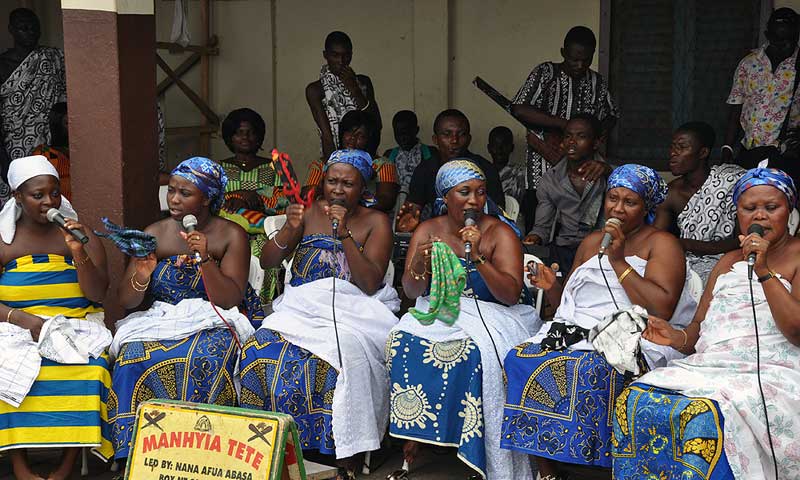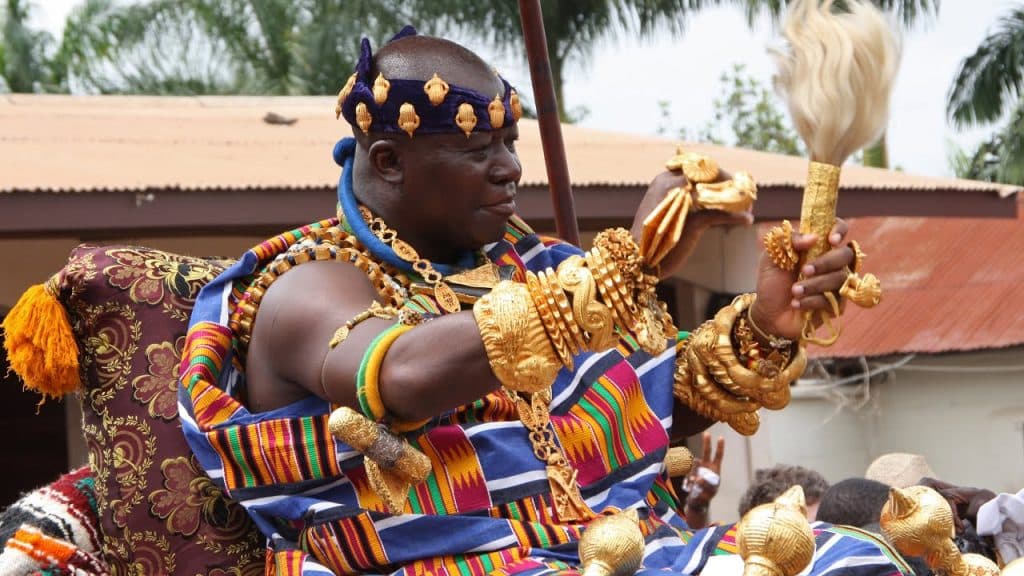The Adae Kese Festival, also known as the “big resting place,” is a significant and infrequent celebration among the Ashantis, an ethnic group in Ghana. This festival occurs during two main periods – Awukudae and Akwasidae – and serves to honor and commemorate the achievements of the Asante kingdom.

Originally, the Adae Kese Festival was established to recognize the achievement of statehood by the Ashanti people after the Battle of Feyiase, where they fought against the people of Denkyira and gained their independence. The festival is also an occasion to perform the purification ceremony of Odwira at the burial shrines of ancestral spirits. It is typically celebrated during the harvest season of yam, hence its alternative name, the “Yam custom,” coined by Europeans.
According to the calendar of the Akans, the Ashanti people celebrate the Adae Kese Festival every two weeks, following a cycle of forty-two days and nine months. The festival primarily serves as a culminating event to celebrate the specific achievements and milestones of the people of the Ashanti kingdom.
As a day of rest, it is forbidden to work during the Adae Kese Festival, and it holds significant cultural and traditional importance for the Ashanti people.
History
The Adae Kese Festival gained prominence between 1697 and 1699 when the Ashanti people achieved statehood after the Battle of Feyiase against the Denkyira. The festival became a tradition after the establishment of the Golden Stool (throne) in 1700 and is celebrated to commemorate significant milestones in the history of the Ashanti Kingdom.

During its early years, the Adae Kese Festival involved sacrifices, both human and animal, and was a time to consecrate the remains of the dead kings, which were kept in a mausoleum at the sacred burial ground of Bantama, a royal suburb of Kumasi. The festival brought a link and a level of faith and solidarity between the living and the ancestral spirits.

The main festival was held at Hemmaa, near the king’s palace and the ancestral shrine of the kings. The second and more important part of the festival was performed at Bantama, the last burial ground of the Asante kings. The “notorious Bantama ritual” involved large-scale sacrifices, including sheep, and there is debate about whether the human sacrifice was also involved. When the festival was announced by the beating of drums, people would go into hiding for fear of being selected for human sacrifice.
Traditions
The Adae Kese Festival, like the Adae Festival, involves similar rituals. However, during Adae Kese, the chief carries a sheep for sacrifice to the Stool, which sets it apart from other celebrations. The festival coincides with the harvest season of yam, and it is also known as the Yam custom by Europeans, as it is celebrated to give thanks to the gods and ancestors for a good harvest. This season is also used to showcase the new yam.

Every five years, the Adae Kese Festival is hosted by the paramount ruler of the Asante in the capital city of Kumasi, Asanteman, and lasts for two weeks. As a formal state celebration, it involves several villages and towns within a traditional area known as Odwira, which means to purify, and brings together Ashanti people from all walks of life.
During the festival, the Asantehene, the titular ruler of Kumasi, holds a colorful durbar of chiefs and their queens, who turn up in full regalia. The pageantry includes dancing to the beats of drums. The festival also serves as an opportunity for people to pledge their confidence in the present king of the Ashante. Additionally, deserving people receive awards of recognition on this occasion. The king also holds a private celebration within his palace chambers with designated members of the royal family and other officials.






































